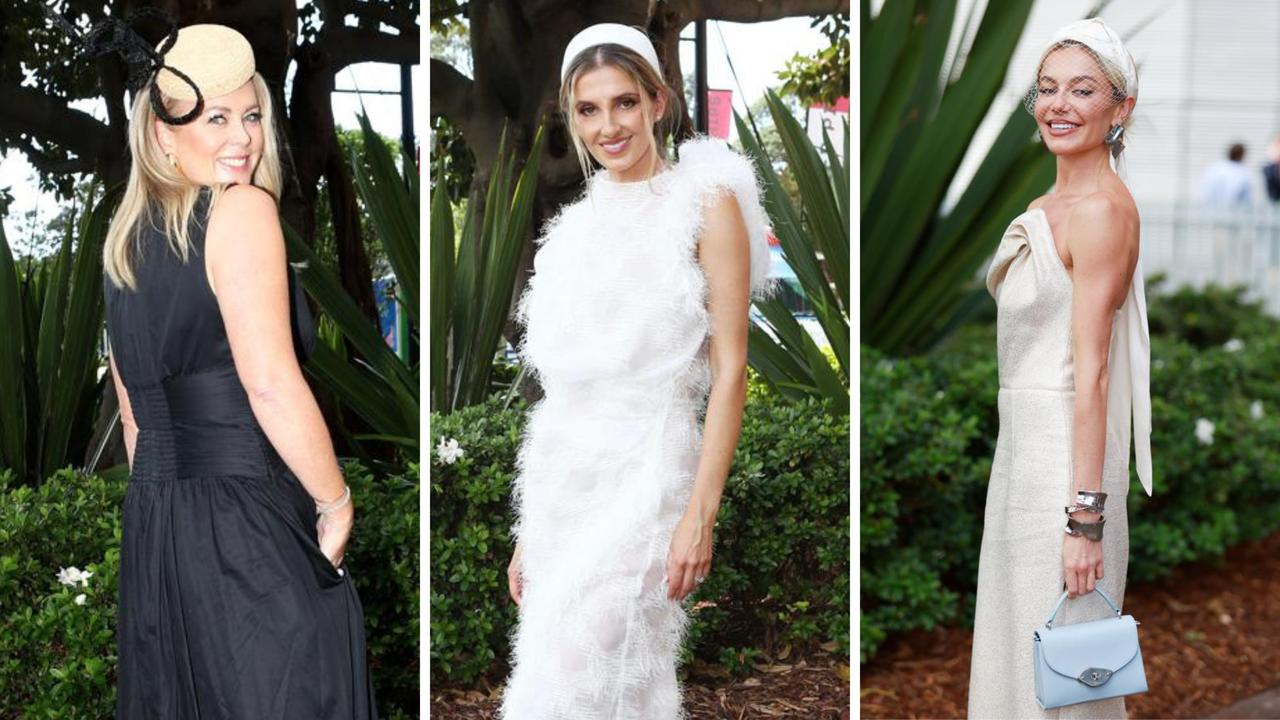Christopher Esber removes bikini campaign images after backlash
A recent swimwear campaign from a popular Australian designer has ignited conversation around the continued glamorisation and promotion of sun tanning.

Fashion
Don't miss out on the headlines from Fashion. Followed categories will be added to My News.
A recent swimwear campaign from a popular Australian designer has ignited conversation around the continued glamorisation and promotion of sun tanning.
Images posted to Instagram by Christopher Esber on January 12 showed pieces from the brand’s Resort 23 Swimwear collection, worn by models with stark tanlines.
The carousel was shared by a number of people on the platform on Monday, among them former Married At First Sight contestant Domenica Calarco, who wrote that the eponymous label’s “glamorising of THIS kind of culture makes me feel sick”.
“I don’t care if this is makeup. It’s just not cool. @christopheresber fan of the brand and have been for years. But I feel deeply that this campaign should be taken down.”
The post was quietly removed from the designer’s account on Monday.
“Christopher Esber acknowledges how the nature of the campaign images shared has negatively affected our customers with the messaging it conveys,” a spokeswoman told news.com.au.
“We understand the severity of what the images represent and do not condone the glamorisation of tanning, or the promotion of sun tanning.
“We have removed the images off all platforms effective immediately and take full responsibility for this creative choice.”
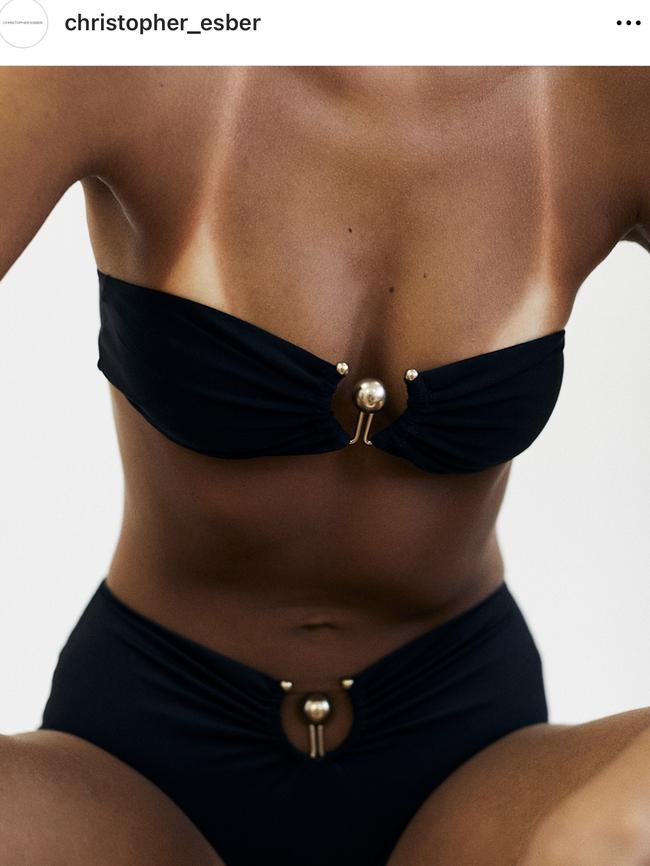
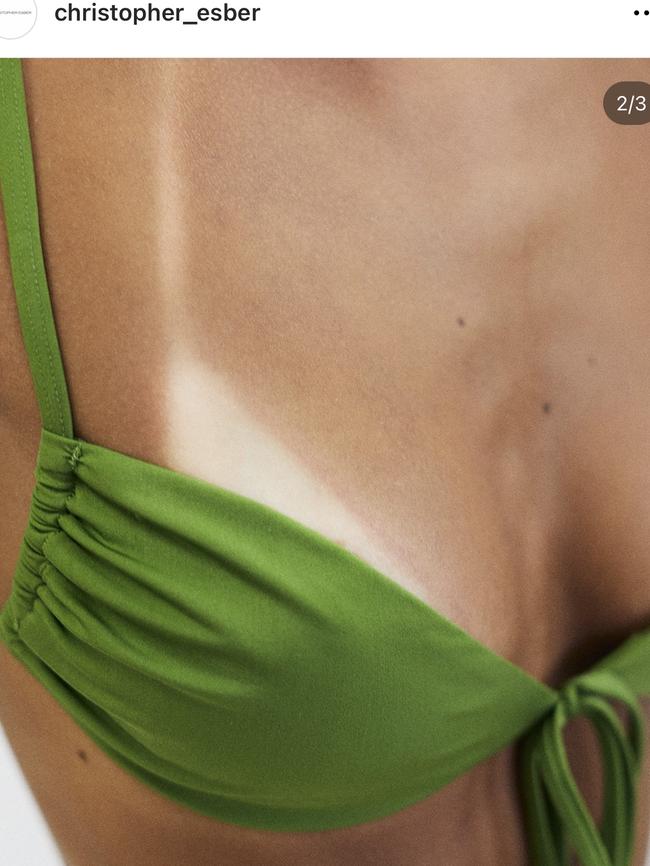
Speaking to news.com.au, Call Time On Melanoma founder Lisa Patulny, who drew attention to the shoot on her own social media, said the campaign imagery “would have been just as beautiful without the model’s tan lines, and the clothes just as desirable”.
“The choice to include them as part of the creative was a mistake, and it’s something that should be acknowledged,” she added.
“Do I think Christopher Esber was intentionally trying to usher back in Australia’s ‘golden age of tanning’? No.
“It’s more that for some people, that era has never ended. That tells me that we need to work harder at sharing sun safety awareness in ways that resonate with young people.”
Each year in Australia, skin cancers account for 80 per cent of all newly-diagnosed cancers. Yet Patulny said she was “not surprised” that images like these could still pass muster.
“Despite the work that’s been done in this space by sun-safe influencers and brands, there are still many that are ignorant of the real-world impacts of promoting sun tanning,” she said.
“I believe brands who do this are complicit in promoting sun tanning culture and the melanoma and skin cancer deaths it directly causes. When a brand has influence, it must also have responsibility for its messaging.”

While Australia has a significant beach culture, “when you share images of your swimwear on models with tan lines you are directly contributing to and influencing the standard of beauty”, Patulny explained.
“We have spent decades believing that tan lines are attractive because that’s how they have been portrayed to us in movies, on TV, in magazines, on celebrities, and now on social media. We need to see that the opposite can be true,” she said.
Chair of the Cancer Council National Skin Committee, Professor Anne Cust, told news.com.au the organisation is also “concerned about brands promoting suntans”.
“A suntan is a response to excessive UV exposure and is therefore a sign that UV damage has occurred. There is no such thing as a safe suntan,” Professor Cust said.
“Australia has the highest rate of skin cancer in the world with two-in-three Australians expected to be diagnosed in their lifetimes and almost 2000 Australians dying of skin cancer each year.
“However, overexposure to UV radiation causes 95 per cent of melanomas, making it almost entirely preventable. We urge people not to proactively seek a suntan.”
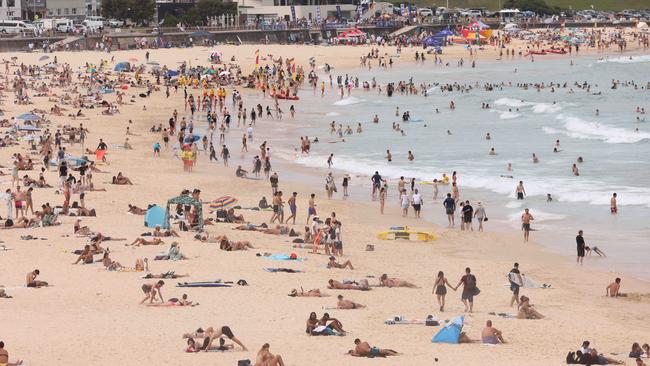
A petition, launched on Monday by Sydney writer and podcast host Melissa Mason to ban tanning product advertising in Australia, has already gained more than 3000 signatures.
“Tanning products are being advertised in Australia across social media, influencing young people on TikTok and Instagram to lie out in the sun with the express purpose of tanning their skin,” Mason’s petition reads.
“The Department of Health needs to thoroughly investigate the advertising and marketing of tanning products in Australia and act quickly to prevent young people from following dangerous trends generations before them have paid the price for.
“We want to see a ban on advertising products that have no SPF but are designed to be worn in the sun to encourage a tan, and strict regulations around tanning products in general, in particular how they are allowed to be advertised and marketed in Australia.”
TikTok has also stepped in, actively banning videos encouraging tanning, after Melanoma Institute Australia raised concern about the “sunburnt tanlines” hashtag on the platform having more than 200 million views, the videos consisting largely of teenagers and young adults showing off their sunburn.
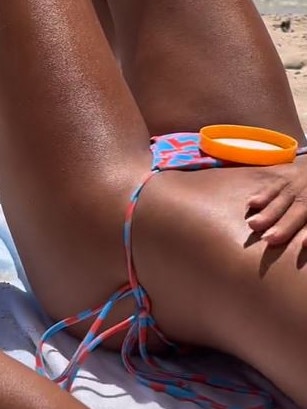
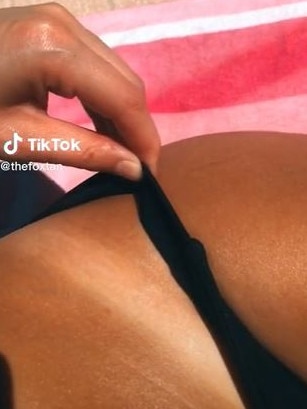
It also launched its “Tanning. It’s Cooked” campaign – which has been live since December 1 – which activates a warning message for users when search terms like “beach”, “sunburn”, and “summer sun” are typed in.
Anyone looking for content about tanning with be fed a message that reads: Australia is #1 in the world for skin cancer. Find out more about how to protect yourself from melanoma.”
“We hope that we can save some lives,” general manager of TikTok in Australia and New Zealand, Lee Hunter, said. “And we hope that people can really start to change the message around the dangers of tanning.”
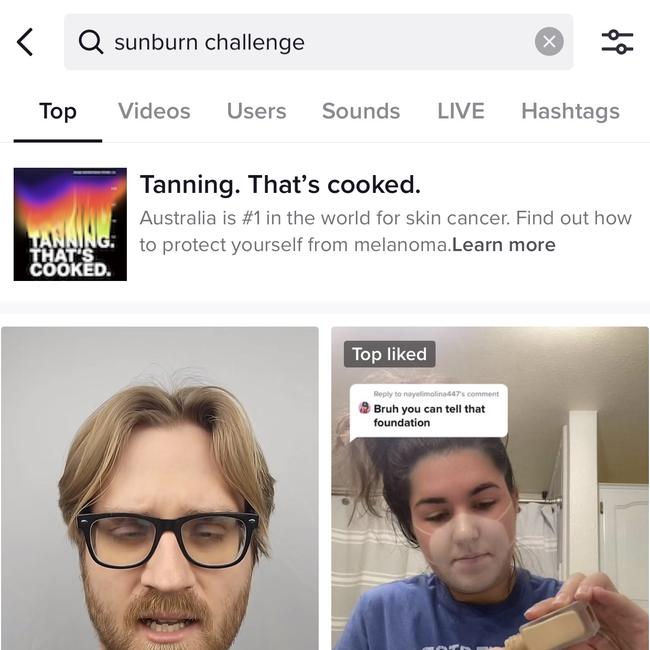
In the meantime, “brands and influencers can combat sun tanning culture by a) educating themselves on the facts, and b) understanding why eradicating it is important from a human perspective”, Patulny said.
“Once you’ve read the first person stories of people who have had or have melanoma, you will get it.
“On a practical level, stop sharing pro-tanning imagery and promoting tanning products.
“Instead, use your creativity, skills and talent to showcase the ways in which sun safety can be desirable.”
We also need to remember, she pointed out, that “skin colour isn’t a trend”.
“Sun safety aside, there is a whole other conversation we need to have in this country about white people co-opting significantly darker skin colours as a beauty ‘trend’.”
Originally published as Christopher Esber removes bikini campaign images after backlash





